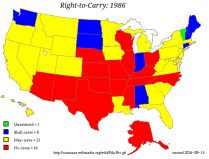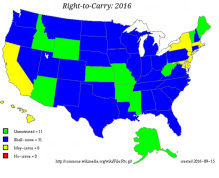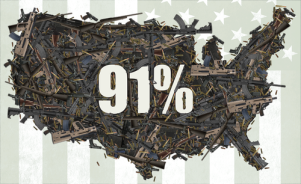Michael R. Weisser's Blog, page 75
November 23, 2016
Want To Reduce Gun Violence? The Real Battle Is In The States, Not The Feds.
Now that The New York Times has once again become the newspaper ‘of record’ even for Donald Trump, we can sit back and wait for the Gray Lady to begin pronouncing on everything and anything having to do with the election results on November 8th. And the newsroom started right off with an ‘analysis’ of whether Trump’s victory was fueled by the ‘gun vote,’ and to nobody’s surprise, at least not mine, they discovered that it was. Or at least Gun-nut Nation thinks it was. And since the NYT will now begin to feature story after story about all those ‘forgotten’ folks who came out for Trump – in the interests of fair and balanced journalism – you can bet that the gun-nut gang will be a central feature of more articles to come.
Of course the Times made sure to give a bit of space to the other side, quoting Everytown’s Erika Soto Lamb and also Jenn Crowe who worked on the Nevada background-check vote, but basically the piece was fluff and nonsense for various pro-gun advocates, including none other than C. J. Grisham from Open Carry Texas who proudly stated that he went out last week and bought two more AR-15 rifles just in case Hillary actually won.
Let me break the news gently to the gun violence prevention (GVP) community: the real problem going forward will not be to figure out what to do; nor will it be to craft some kind of ‘new’ message about the politics of guns. The real problem will be to find some way to push back against what will surely become an attempt by liberal influencers, pundits and newsmakers at the national level to cloak the wolf in sheep’s clothing, so to speak, and shift the spectrum towards a more ‘balanced’ view on guns. And like it or not, this attempt by liberal media to find some way of making ‘gun rights’ a more reasonable proposition will last for as long as the liberal media feels that its relevance is dependent on how much access it can maintain with President Shlump.
But since pictures usually are worth lots of words, especially my words, I’d like to draw your attention to a couple of pics that highlight what I believe is the challenge faced by GVP. Here is a map which shows how many states granted CCW (blue or green) in 1986:
And here’s how the map has changed from then until now:
Want to know what’s also changed over those same thirty years? Republican control of state governments has gone from one-third to two-thirds. Now many of those Democratic-controlled state governments were in the hands of southern Democrats whose views, at the time, not really all that different from the Republicans who would replace them and many of these states were gun-rich states anyway, so it wasn’t like either party was going to run around proclaiming the virtues of regulating guns. But if you think for one second that state legislatures are awash in NRA lobbying money, you’re wrong. In the Nevada fight over extending background checks, the NRA was outspent by more than two to one.
After the 1994 election when the GOP grabbed control of the House for the first time since 1952, much of the post-election narrative was based on the idea that the vote was payback time by the NRA for how representatives voted on the assault weapons ban bill. And even though subsequent research indicated that this narrative wasn’t necessarily true, the notion that guns represent a toxic element for politicians at the national level continues to take hold. And the proof of what I just said can be found in the NYT article quoted above.
I got a good idea for my friends in the GVP. Do what you gotta do on K Street in DC but let’s not take our eyes off the ball because where the ball really bounces is in those increasingly-red state legislatures from sea to shining sea.


November 22, 2016
An Important Survey That Sheds Some Light On How Voters Thought About Guns.
Our friends at the Center for American Progress (CAP) have just released a post-election poll which gets right down to the details about how and why folks voted the way they did. I’m going to leave the discussion about the overall poll results to the experts in politics, but I would like to discuss the results of several poll questions which related specifically to the issue of guns.
 The CAP press release which accompanied the survey found that in most areas, a majority of voters for both candidates preferred a middle-of-the-road approach to legislative issues and priorities, as well as a “notable alignment between Trump and Clinton voters on progressive issue priorities such as equal pay, money in politics, gun violence, and criminal justice reform.” But when I examined the answers to specific questions about gun violence, with all due respect, this ‘notable alignment’ does not appear to be all that notable or all that aligned.
The CAP press release which accompanied the survey found that in most areas, a majority of voters for both candidates preferred a middle-of-the-road approach to legislative issues and priorities, as well as a “notable alignment between Trump and Clinton voters on progressive issue priorities such as equal pay, money in politics, gun violence, and criminal justice reform.” But when I examined the answers to specific questions about gun violence, with all due respect, this ‘notable alignment’ does not appear to be all that notable or all that aligned.
The survey contains a reference to gun issues in three questions: Question #65 asks participants to rate the degree to which the candidates’ stance on ‘ensuring no infringements on the 2nd Amendment’ was important in determining how they voted; question #89 asks participants to rate the importance of ‘ensuring no infringements on the 2nd Amendment’ as a priority of the next Administration and Congress; question #102 asks participants whether they would support or oppose “legislation requiring background checks on all gun sales, including those sold online or at gun shows.”
And here’s how it went down. Three-quarters of Trump’s supporters said that protecting the 2nd Amendment was ‘important’ or ‘very important’ in determining their decision to vote for him; less than half the Clinton supporters used the same 2nd-Amendment criteria for supporting HRC. In other words, Clinton’s call for more gun regulations motivated her voters considerably less than Trump supporters were motivated by his defense of 2nd-Amendment ‘rights.’ Gun-sense Nation was rightfully exultant that we finally had a national candidate who was willing to take on the NRA, but it wasn’t a strategy that appeared to have swayed votes.
Now things get a little sticky, because the next question asked participants to indicate the degree to which they expect Trump and the Congress to act on different priorities, one of them being protecting 2nd-Amendment ‘rights.’ And on this one, the views of Trump versus HRC supporters didn’t align at all. Again, nearly three-quarters of the Trumpsters expect Trump to make good on his campaign claims to bolster 2nd-Amendment guarantees; again less than half of HRC’s supporters want to see the 2nd Amendment strengthened, a division of opinion that was exceeded only by views on keeping the ACA and building s Mexican wall.
Finally, and here’s the hot-button issue, namely, the question of comprehensive background checks. Trump voters split about 70-30 on extending background checks; HRC voters, not surprisingly, came down more than 8 out of 10 in favor of comprehensive checks. I didn’t mention a fourth gun question (#58 and #82) because asking people if they support efforts to reduce gun ‘crime’ and gun violence is really a two-edged sword. This was the only gun question where both sides more or less agreed, but I guarantee you that had the question been broken down to its two component parts – gun violence versus gun crimes – one side would have been much more concerned with reducing gun violence, the other side much more concerned with doing something about gun ‘crimes.’ And if you need to be told which side is which on that one, you didn’t pay much attention to the HRC-Trump argument on guns during the campaign.
I’ll always stand up and applaud CAP for the really great work they do; work which is much more important right now as we look for ways to check the behavior of the lunatics who want to turn the government into their private asylum. But in opposing the craziness, we have to understand it for what it is and not look for silver linings which may or may not exist.
 [image error]
[image error]
Some Suggestions For A Gun Violence Prevention Strategy In The Age Of Trump.
 Now that the dust is slowly beginning to settle and the smoke slowly beginning to clear, Gun-sense Nation has to sit down and come up with a workable plan to drive the issue of gun violence prevention in the Age of Trump. Because at least for the next couple of years, until he really screws things up and/or everyone gets sick of his noise, the organizations and individuals committed to ending the senseless behavior that kills or injures 120,000 Americans ever year are going to have to figure out how and what to do with the lunatics in charge. So while I’m not suggesting that what follows should be adopted as an agenda by the gun violence prevention (GVP) community, I do hope that at least some of these ideas will at least be discussed as plans for the future of GVP begin to take shape.
Now that the dust is slowly beginning to settle and the smoke slowly beginning to clear, Gun-sense Nation has to sit down and come up with a workable plan to drive the issue of gun violence prevention in the Age of Trump. Because at least for the next couple of years, until he really screws things up and/or everyone gets sick of his noise, the organizations and individuals committed to ending the senseless behavior that kills or injures 120,000 Americans ever year are going to have to figure out how and what to do with the lunatics in charge. So while I’m not suggesting that what follows should be adopted as an agenda by the gun violence prevention (GVP) community, I do hope that at least some of these ideas will at least be discussed as plans for the future of GVP begin to take shape.
There must be a dedicated and serious effort to prevent Gun-nut Nation from achieving its most fervent goal, namely, a national concealed-carry law that will be valid in all 50 states. And I am opposed to national CCW not because it would necessarily increase gun violence, but because it would make walking around with a gun just as normal and mainstream as driving a car. Which would lead to even less restrictions on the ownership and use of guns.
States and individual communities should be encouraged to more strictly regulate the most lethal guns. A town north of Chicago – Highland Park – banned the ownership of AR-style rifles by town residents following Sandy Hook and the ban was upheld. The Attorney General in Massachusetts banned purchases of black guns in the Bay State which unleased a spate of lawsuits that will probably end up in the trash. Let’s remember that the 2nd Amendment protects private ownership of guns but doesn’t say anything about purchasing a particular type of gun.
Gun buyback programs work. The buyback program in Worcester, MA, has taken more than 2,500 guns off the streets of Worcester and surrounding towns at an average cost of $60 a gun. Let’s increase the buyback tariff to $150 a gun and see if 20 cities with high levels of gun-violence could pull 500 guns of the streets of each city every year. So it would cost $1.5 million to reduce the gun arsenal by 10,000 guns – that’s chump change for someone like Bill Gates or Warren Buffet or (God forbid) the Clinton Foundation to pony up for collecting a really big pile of guns.
Start pestering school districts to mandate gun violence instruction in the primary grades. Guns don’t show up in high school; they first start appearing in the middle-school years. Massachusetts mandated an anti-violence curriculum several years ago but confined the instruction to lessons about bullying after several unfortunate student suicides took place. Shouldn’t they also have added a module on violence cause by guns?
Don’t stop talking about gun violence – no public forum is out of bounds. Public discussions about gun violence used to be of the moment, provoked by this mass shooting or that. The GVP community has gone far beyond rallying around the issue only when something dreadful takes place. But keeping the dialog going and increasing its volume is not something that should only occur in response to specific events. It should go on all the time.
Note that I did not mention the ‘usual GVP suspects’ like universal background checks or tightening up taking guns away in at-risk situations like suicide or domestic disputes. I didn’t mention these issues because there is enough momentum behind them now to sustain such strategies even when the chances for success are less positive than they were before. I just wanted to throw a few more items on the table because we need to attack this issue from as many different perspectives as we can, and let’s not forget that the next election is now less than two years’ away.


November 21, 2016
A Little Suggestion For Funding Gun Violence Research.
One of Gun-sense Nation’s primary concerns that will now linger in an unfinished state is the question of funding public health research into guns. The major funding source – CDC – was shut down in the 1990s, but while private sources stepped in to try and close the gap, much important work remains undone. And analyzing both this unfinished agenda and its implications for gun violence prevention (GVP) advocacy and policy are the subjects of a commentary by Everytown’s innovation director, Ted Alcorn, that recently appeared in a JAMA issue published online.
 Before I go further into Alcorn’s discussion, I need to make my own thoughts and biases about gun-violence research clear. As someone who holds a Ph.D. in Economic History and published several university monographs on same before getting into writing about guns, I would never, ever suggest or imply that serious research on any topic is anything other than a good thing. But I am occasionally dismayed by what I perceive to be a desire on the part of gun-violence researchers to present themselves as being ‘neutral’ or ‘unbiased’ when it comes to the reason they study violence caused by guns. I don’t think that a researcher should feel at all reluctant to state the obvious, which is that without guns there would be no gun violence. And if the political powers-that-be feel that 120,000 gun deaths and injuries each year are a price worth paying for a cynically-invented fiction known as 2nd-Amendment ‘rights,’ there’s no reason why any serious researcher should pay respectful homage to all that Constitutional crap. Because it’s not as if Gun-nut Nation would ever believe that any research into gun violence could be free of bias anyway since they don’t believe there’s really anything called ‘gun violence’ at all.
Before I go further into Alcorn’s discussion, I need to make my own thoughts and biases about gun-violence research clear. As someone who holds a Ph.D. in Economic History and published several university monographs on same before getting into writing about guns, I would never, ever suggest or imply that serious research on any topic is anything other than a good thing. But I am occasionally dismayed by what I perceive to be a desire on the part of gun-violence researchers to present themselves as being ‘neutral’ or ‘unbiased’ when it comes to the reason they study violence caused by guns. I don’t think that a researcher should feel at all reluctant to state the obvious, which is that without guns there would be no gun violence. And if the political powers-that-be feel that 120,000 gun deaths and injuries each year are a price worth paying for a cynically-invented fiction known as 2nd-Amendment ‘rights,’ there’s no reason why any serious researcher should pay respectful homage to all that Constitutional crap. Because it’s not as if Gun-nut Nation would ever believe that any research into gun violence could be free of bias anyway since they don’t believe there’s really anything called ‘gun violence’ at all.
But let’s get back to what Ted Alcorn has to say. He and his research group looked at 2,207 scholarly articles published between 1960 and 2014, and discovered that the number of yearly articles doubled between 1984 and 1990, then doubled again between 1990 and 1994-95, then doubled again by the early 2000’s, and then plateaued until they increased again noticeably in 2013-14. In other words, the volume of gun research as measured by the number of published articles has not specifically increased since the mid-90’s, except for what has recently happened, no doubt due to the fallout from Sandy Hook.
More problematic than the fact that the number of scholarly resources has been essentially unchanged for the last twenty years is that the general interest in gun violence research, as measured by the number of times that scholarly articles are cited, reached a high-watermark in 1988 and then declined more than 60% through 2012. This corresponds with the fact that the number of active gun-violence researchers also plateaued in the late 1990’s and has not increased ever since.
The problem facing gun research is not the absence of research funding per se. It’s that the absence of research dollars tends to discourage new researchers from entering the field. And when all is said and done, advances in science have a funny way of growing because more people not only conduct that research in a particular field, but also share their research, critique each other’s research and, most of all, conduct more research.
I think the idea that manna from heaven will ever again appear for government-sponsored gun violence research is a non-starter at best, a pipe dream at worst. But I have an idea that I want to run up the flagpole about where to find money for this kind of research. There’s a little foundation out there which happens to be sitting on $400 million bucks. They refer to what they do as ‘life-changing work.’ What could be more life-changing than saving the lives of 120,000 Americans each year who are killed and injured by guns? The outfit is run by Donna Shalala who gave out plenty of gun-violence research money when she headed HHS from 1993 to 2001. Shouldn’t Gun-sense Nation give her a call?


If The Facts Don’t Support Gun-nut Nation, Why Bother With Facts?
Now that we have a President-elect who has made a virtue out of not even trying to distinguish between fact and fiction in debates about public policy, we will begin to see this confusion appear in public policy discussions about guns. Actually, it’s not a confusion at all; rather, the door is now open for Gun-nut Nation to say anything they want to say about guns because as long as they say it, then it must be true. And if the other side says it, since they lost on November 8th, it’s false.
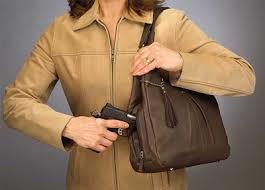 How long did it take for this new approach to appear? Exactly one week following the election, with an article in National Review. The author, Andrew Branca, a self-described expert on self-defense, floats around the alt-right radio world and also teaches self-defense ‘law’ on a website which, of course, contains the usual disclaimer that none of the content ‘accurately communicates laws or court decisions,’ too bad these classes can’t be listed any longer on the Trump University curriculum.
How long did it take for this new approach to appear? Exactly one week following the election, with an article in National Review. The author, Andrew Branca, a self-described expert on self-defense, floats around the alt-right radio world and also teaches self-defense ‘law’ on a website which, of course, contains the usual disclaimer that none of the content ‘accurately communicates laws or court decisions,’ too bad these classes can’t be listed any longer on the Trump University curriculum.
The subject of the NR critique is an article which just appeared in a leading medical journal, JAMA – Internal Medicine, which finds a clear connection between the ‘Stand Your Ground’ law in Florida and an increase in homicide in the Gunshine State. The article looked at homicide rates and gun-homicide rates between 1999 and 2014, and found a significant increase in both trends after the SYG law was passed in 2005. This increase was particularly evident for age groups 20-35 and for males, which happen to be the two most common demographic categories for gun violence overall.
This is not the first study which links SYG laws to increases in gun violence and violence in general. The Everytown research group found that after the law was passed, the justifiable homicide rate tripled, with most of the victims, not surprisingly, being young, Black men. A detailed study based on Texas data showed that such laws did not deter crimes like assault, robbery or burglary, but did lead to an increase in murder and manslaughter. In other words, if you walk around armed and are not required to first back down when facing what you believe to be a criminal threat, you might end up shooting someone but you won’t be protecting yourself or your community from crime.
Which is exactly the opposite of what Gun-nut Nation claims is the reason for walking around with a gun. And you can be sure that you’ll hear this nonsense again and again next year when the NRA leads the charge to get a national, concealed-carry law on the Chief Executive’s desk. Which brings us back to Branca’s critique of the JAMA new study on the effects of the Florida STG laws; a critique based on a misuse of data that reaches colossal terms.
Branca states that the SYG study is ‘fatally flawed’ because it does not distinguish between murder on the one hand and homicide on the other and, in many cases, murder turns out to be a reasonable response by a victim to a violent crime. And since the whole point of STG laws is to give a crime victim an opportunity to defend himself before or during the commission of a crime, of course the number of people killed would go up as all these gun-toting community defenders use their guns to protect themselves and everyone else.
. In Florida, the average annual homicide rate increased from 600 to 840 after STG was passed. Meanwhile, according to the FBI, the number of justifiable homicides recorded throughout the entire United States averaged roughly 280 per year for the years covered by the JAMA report Should we assume, therefore, that every, single act of justifiable homicide occurred only in the Gunshine State? And that’s the level of stupidity masquerading as informed opinion that we will now face when it comes to the public debate about guns.


November 18, 2016
Did The NRA Win The Election For Trump? Ha Ha Ha Ha Ha.
The boys from Fairfax didn’t wait one second to announce that the $30 million they ponied up for Trump television ads was money well spent; Wayne-o called his members the “special forces that swung this election” and then asked for a few bucks. Chris-o got on the NRA-ILA website and intoned that the election showed that ‘gun rights are not for sale.’ But gun-nut hyperbole notwithstanding, does Trump owe his victory to the NRA?
 In the four ‘firewall’ states (PA, MI, OH, FL) the GOP vote increased 9% – a not-inconsiderable jump. On the other hand, in those same four states, Clinton’s vote in those states showed a deficit of 4%. Overall, Trump’s gain was greater than HRC’s loss, but had she improved on Obama’s 2012 performance by a measly 2%, the aggregate vote for those four, crucial states would have gone her way.
In the four ‘firewall’ states (PA, MI, OH, FL) the GOP vote increased 9% – a not-inconsiderable jump. On the other hand, in those same four states, Clinton’s vote in those states showed a deficit of 4%. Overall, Trump’s gain was greater than HRC’s loss, but had she improved on Obama’s 2012 performance by a measly 2%, the aggregate vote for those four, crucial states would have gone her way.
That’s all fine and well except for the fact that statewide totals varied significantly from state to state. Trump won PA by 67,000+ votes out of almost 6 million, he grabbed MI by 11,000 out of 5 mill, the gap was wider in Florida (110,000) and in Ohio, wider still (450,000). So let’s get down to county-level votes and see whether the gun vote shows up or it don’t.
Hillary carried 7 Pennsylvania counties clustered around Philadelphia, which delivered 1,725, 927 votes, or 59% of her statewide vote. Trump won the rural counties which is where there are lots of guns. Except he won Pennsylvania because he also won urban Erie County, which voted nearly 60% for Obama in 2012. In Erie he pulled 11,000 more votes in 2016 than Romney pulled in 2012, but he won by less than 3,000 votes. If Hillary had received the same number of Erie votes in 2016 that came out for Obama in 2012, she would have won the Keystone State.
In Michigan Trump won by two-tenths of one percent. But in 2012 Barack won 20 of the state’s 83 counties, this year HRC prevailed in only 8, including the bloc around Detroit, so the Motor City vote didn’t hold. Hillary’s vote represented a net loss of more than 75,000 votes – and that took care of that. She didn’t lose votes in Wayne because people didn’t come out; she lost votes because upwards of 60,000 people have moved out of Wayne County in just the last five years.
Michigan happens to be a big gun state, but not in places where Democrats ever go looking for votes. Other than Marquette, the northern peninsula is politically deep red, there are more hunting rifles sitting in wall racks than people sitting underneath those racks in their La-Z-Boy chairs. But where Hillary really took a whack was Genesee County, just northwest of Detroit, where 26,000 Democratic votes from 2012 failed to show up in 2016, even though the county still voted blue. What’s the county seat? Flint. How could anyone take the trouble to vote in Flint?
The Ohio results were more dramatic but just the same. Trump gained 178,205 votes, mostly in rural counties, maybe gun owners, maybe not. But the blue team lost 380,259 statewide votes between the two elections – goodbye Buckeye, goodbye. As for the Gunshine State, here we probably do see Advantage NRA, if only because both slates increased statewide totals from 2012 to 2016, but for every new vote that went for HRC, two new votes showed up for Trump. But if Ohio, Michigan and Pennsylvania had gone blue, she would have been over the top without the Florida vote.
What made at least three of these four states swing from blue to red was not the power or the voice of the NRA; it was the failure of the Democratic Party to address issues like loss of jobs and economic status in those and other states. The NRA didn’t lead the Trump campaign; it latched onto a campaign that had its own dynamic, its own message and its own success.


November 14, 2016
An Important Gun-Violence Film And Discussion On November 19.
Temple Sinai Proudly Presents the 2016 Zwerdling Memorial Program for Social Justice
GUN VIOLENCE PREVENTION: Problems, prospects and the public – Saturday, November 19
Program Schedule
3:00 PM A keynote address by Congressman-Elect Jamie Raskin (D-MD 8th District)
3:30 PM Screening of 91%, a new documentary about the 91% of Americans who support universal background checks, followed by a discussion with film director, John Richie
4:45 PM Break
5:00 PM A panel of experts on gun violence prevention, who will discuss the cultural, legal, political, and social challenges to achieve it, including chances for legislative action in the 115th Congress and on the state level
6:30 PM Havdalah Service, Dinner and Concluding Remarks
Featured Panelists
Daniel W. Webster, ScD, MPH
Professor of Health Policy and Management, Johns Hopkins Bloomberg School of Public Health, and Director, Johns Hopkins Center for Gun Policy and Research
Kathleen Krepps
Chapter Spokesperson – D.C., Moms Demand Action for Gun Sense in America
Kate Ranta
Domestic gun violence survivor and activist with The Everytown Survivor Network
Mike Weisser
Gun store owner; Life Member, National Rifle Association; leading NRA critic and featured Huffington Post blogger, “Mike the Gun Guy.”
Moderator: Lynn Sweet
Washington D.C. Bureau Chief, Chicago Sun-Times
Space is limited. RSVP at http://www.zwerdlingshabbaton2016.eventbrite.com by Friday, November 18 at 9 AM.
There is no charge to attend the program only; program and dinner is $20/person.Temple Sinai’s Gun Violence Prevention Group (TSGVPG) formed the summer of 2016. It seeks through educational programs, research and advocacy to educate and engage the Temple Sinai community on the vital issues of gun violence and its prevention in America today. For more information, please email steve.klitzman@gmail.com
This program is supported by the Zwerdling Memorial Program for Social Justice which was established by the Zwerdling Family in memory of Joseph and Abraham and Thelma Zwerdling, and their legacy of pursuit of social justice.


What’s Gun-Sense Nation Going To Do Under The Trump Regime? Not Back Down, That’s For Sure.
Now that the dust has settled and the smoke cleared, Gun-sense Nation has to figure out how to move forward during the presidency of Donald Trump. Back when nobody realized how much Nate Silver’s predictions were nothing more than hot air on toast, there was almost a giddy-like atmosphere among gun violence prevention (GVP) advocates imagining an unthinkable political alignment of Hillary in the White House and a Chuck Schumer-led Senate on Capitol Hill. Expanded background checks, banning assault rifles, scrapping PLCAA, anything was possible. No wonder Smith & Wesson lost nearly $300 million in market value over the last three days. Who needs to buy another gun now that the gun-grabbers have been banished for good?
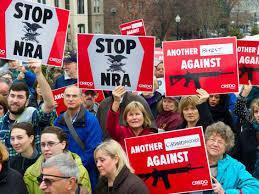 Except they haven’t been banished at all. Just because the 2nd Amendment gives Americans the Constitutional right to own a gun, doesn’t mean there’s any Constitutional requirement to buy a gun. So it’s back to the drawing board, this time with a sharpened understanding that social change, serious social change, profoundly serious social change is never a process that takes place overnight. The task is long, arduous and rife with unanticipated twists and turns of all kinds. So if you came into this process because someone promised you a rose garden, you should have stayed home.
Except they haven’t been banished at all. Just because the 2nd Amendment gives Americans the Constitutional right to own a gun, doesn’t mean there’s any Constitutional requirement to buy a gun. So it’s back to the drawing board, this time with a sharpened understanding that social change, serious social change, profoundly serious social change is never a process that takes place overnight. The task is long, arduous and rife with unanticipated twists and turns of all kinds. So if you came into this process because someone promised you a rose garden, you should have stayed home.
After all, what are we talking about when we use the term ‘gun violence?’ Most people define it by the number of victims killed (35,000+) or injured (75,000+) each year with guns. But it’s much more than that. Guns, owning guns and using guns represents a national culture in this country, one of the most powerful and deep-rooted cultural traditions that this country ever had. And I’m not just thinking about Kit Carson and Daniel Boone using their Kentucky long rifles to open the frontier, or General Patton saying that the M-1 Garand was the “greatest battle implement of all time,” or Clint sticking his 44-magum in the bad guy’s face and saying, “Go ahead, make my day.” No other country celebrates Christmas by sticking a b-b gun under the Yule tree, no other country spends upwards of $6 billion each year on video games that let someone shoot someone else with a Glock. And of course this is the only country in the entire world which gives just about all its citizens free access to real guns.
And that’s exactly the point. Because there would be no gun violence, not a single death or injury, if there were no guns. So we can argue amongst ourselves about which regulation or which law will reduce gun violence a bit here or there. And I’m not trying to say or imply that new regulations are no better than no regulations at all. What I am saying is that really reducing gun violence will require a massive cultural change, and it’s not the kind of cultural change which GVP advocates blithely refer to when, for example, they throw up the ‘success’ of something like MADD.
Because nobody in their right mind would ever argue that getting into a car drunk is a good thing. But plenty of Americans, probably a majority of Americans, now believe that owning a gun makes you safe. So changing this culture is not just changing how we think about guns, it’s changing how we think about why we need to have guns, and you don’t change culture by citing this statistic or that.
A solid piece of new research shows that 10 million gun owners have entered the gun market over the last twenty years. These people, and the folks who may be thinking about coming into the gun market perhaps represent a population whose views on gun culture are not yet firmly fixed. Gun-sense Nation needs to reach this audience and help create an alternate culture in which guns are neither necessary or even relevant to the real issues faced by people in their daily lives. And this task lies ahead.


November 10, 2016
Hello Donald Trump, Good-bye Smith & Wesson.
So Tuesday night around 9 PM we all learned that America’s pro-gun Presidential candidate was going to be the 45th President of the United States, and the gun industry responded to this signal event on Wednesday by embarking on financial collapse. Ruger, the largest sporting-arms manufacturer, saw its stock shares drop 14.4%, giving back a steady, 60-day climb; Smith & Wesson’s stock collapsed 15% and ended up where it was back in mid-June. Now you would think that the gun industry would be exultant, given the prospects of what otherwise might have been. After all, had the election turned out the way it was supposed to turn out (thank you, Nate Silver, for not having the slightest idea what you were talking about) gun makers like Ruger, Smith, Glock and Sig would have been facing Armageddon with a White House occupant who appeared determined to finish now what her husband had been unable to do during his Presidential term.
Now you would think that the gun industry would be exultant, given the prospects of what otherwise might have been. After all, had the election turned out the way it was supposed to turn out (thank you, Nate Silver, for not having the slightest idea what you were talking about) gun makers like Ruger, Smith, Glock and Sig would have been facing Armageddon with a White House occupant who appeared determined to finish now what her husband had been unable to do during his Presidential term.
Hillary’s loudest gun spiel, after all, consisted of going after gun makers over the liability issue and reversing the liability protections that the industry received under George Bush in 2005. The law, Protection of Lawful Commerce in Arms Act (a.k.a. PLCCA), basically shields gun makers from class-action suits (torts) brought by defendants who have suffered injuries from guns; i.e., they got shot. A gun maker can still be sued if a particular gun malfunctions and someone gets hurt; but if a gun functions mechanically the way it’s supposed to function, then there’s no liability at all. I mean, the whole point of a gun is that you point it at someone, pull the trigger and it goes – bang – right?
It was Clinton who came up with the idea of ‘rewarding’ gun companies by swapping an immunity from litigation with a new business model that, in the long run, would have put them out of business anyway. Basically, the gun makers would have agreed to rigorously monitor the selling and distribution practices of their thirty-odd national wholesale customers, as well as the thousands of retail dealers; in other words gun makers would be responsible for the business behavior of anyone and everyone who possessed a Federal Firearms License (FFL) and sold even a single one of their guns.
Back in the 1980’s when European handguns began appearing in the American market and threatening the dominance that American gun makers had always enjoyed, Smith & Wesson did a marketing survey and learned, to their surprise, that at the retail level, the market was both very wide and very thin. In most areas there were a couple of retailers who sold 100 Smiths ever year, but most dealers moved between 5 and 10 new guns. Many retailers worked part-time, others sold the guns on their back porch. Asking a factory in Springfield, MA, to make sure that some guy in Podunk, WV was following some ‘best practices’ manual was like going to the other side of the moon.
When Hillary began talking about scrapping PLCCA, this was just another way of saying that the gun industry needed to dry up and blow away. So you would think that her defeat, at least to gun makers, would release paroxysms of joy. But the truth is that what got those shares of Smith & Wesson and Ruger up to where they were before yesterday wasn’t all these new gun-buyers flooding into the market to buy all those guns whose annual production numbers have doubled since 2009; it was gun owners’ fear that all their toys would be taken away.
Know how many new gun owners have appeared in the last twenty years? About 10 million. Know how many guns have been manufactured or imported over that same span? About 190 million, give or take a few. And when were sales strongest? When a gun-grabber like Clinton or Obama was around. So now we have a stalwart 2nd-Amendment protector moving into 1600 Pennsylvania Avenue, but the 2nd Amendment doesn’t protect the manufacture of guns.


November 9, 2016
Did The Gun Vote Swing This Election? I Don’t Think So.
As an unrepentant, yellow-dog Democrat, I wasn’t enamored of the election results from last night. But the first thing that caught my eyes as the returns started to roll in was the drop-off in vote totals from four years’ before. Trump is going to end up with about the same number of votes as Romney got in 2012; Hillary’s total will probably be somewhere around 3.5 million less than what Barack pulled that same year. Trump will end up getting something less than 59 million votes this year; he won because lots of Democratic voters didn’t show up, not because he was so strong at the polls.
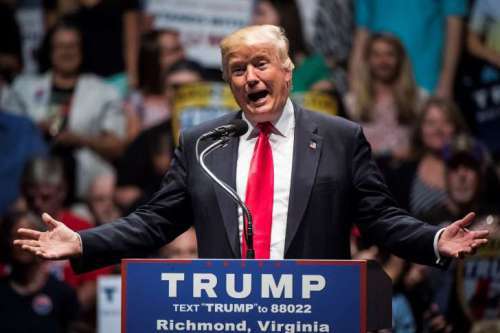 The decline in both red and blue vote totals at the statewide levels was also evident in the two really surprise states, namely, Wisconsin and Michigan which, had they gone for Hillary, she still would not have awakened this morning with a larger Secret Service detail guarding her house, but the results in those two states probably would have been reflected in the count from Pennsylvania and other states as well. Trump’s totals from Wisconsin, Michigan and Pennsylvania will end up somewhere south of 7 million; Hillary won’t be far behind. Trump will end up pulling about 300,000 more in PA than came out and voted red in 2012, but in Michigan and Wisconsin the 2012-2016 totals will be the same.
The decline in both red and blue vote totals at the statewide levels was also evident in the two really surprise states, namely, Wisconsin and Michigan which, had they gone for Hillary, she still would not have awakened this morning with a larger Secret Service detail guarding her house, but the results in those two states probably would have been reflected in the count from Pennsylvania and other states as well. Trump’s totals from Wisconsin, Michigan and Pennsylvania will end up somewhere south of 7 million; Hillary won’t be far behind. Trump will end up pulling about 300,000 more in PA than came out and voted red in 2012, but in Michigan and Wisconsin the 2012-2016 totals will be the same.
Where I am going with these numbers is to try and judge the impact of the ‘gun vote’ on the outcome as a whole. Because from the very beginning of this campaign, gun and gun violence played a central role in how these two candidates presented themselves both to those who ended up voting as well as to the substantial numbers who didn’t bother to vote. Hillary kick started her primary battle against Bernie in a take-no-prisoners statement after the shooting at Umpqua CC. And Trump never stopped reminding his audiences that he was the NRA’s official candidate almost before his campaign began.
Now the fact that the NRA ran television spots in gun-rich states like Georgia, Texas and Tennessee probably didn’t affect the results in those states at all. A majority of residents in these states, wishful thinking to the contrary, will always vote for the GOP, and they don’t need the NRA to remind them that no matter who sits atop the national Democratic ticket, that individual represents a ‘threat’ to their guns.
But it’s in states like Wisconsin, Michigan and Pennsylvania where the value of the gun issue needs to be understood. Because all three states have large, urban populations who are generally resistant to any appeal about guns, but they also have many rural residents, almost all of whom are gun owners and, in theory, might come out in force to protect their 2nd-Amendment ‘rights.’
The NRA is already taking credit for getting their man into 1600 Pennsylvania Avenue, but the overall and most statewide numbers belie their claim. What cooked the Clinton goose was not the turnout for Trump; it was the fact that she was unable to retain the voting strength that the Bomber demonstrated in 2008 and 2012.
Which brings me, of course, to the obvious question: given the fact that all three branches of the federal government are now or will shortly be red, what will be the future for GVP? First of all, three states passed significant ballot initiatives: banning hi-cap mags in California, extending background checks to private sales in Nevada and temporarily blocking hi-risk individuals from access to firearms in Washington State.
There are now 19 states that require background checks beyond the initial point of sale. There were six states that granted unrestricted concealed-carry licenses in the mid-80s; it took the NRA twenty-five years to extend shall-issue to just about all 50 states. So the issue is not where GVP stands today; it’s where it was ten years ago and where it will be ten years from now. Remember – if reducing gun violence was so easy, there wouldn’t have been anything that needed to be reduced.



